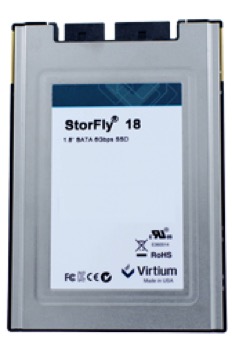1.8-Inch SSD Still Viable in Industrial Embedded Space? – Virtium
"In embedded, IIoT and M2M applications for some time to come"
This is a Press Release edited by StorageNewsletter.com on February 13, 2018 at 2:24 pmStorage device form factors come and go – remember hearing “Wow! How’d they do that?!” at the dawn of 3.5-inch drives? – but some have more staying power than others. This holds particularly true in the industrial-embedded space, which doesn’t follow the same rules as the consumer and enterprise markets do.
For decades, industrial-embedded designers have placed far more emphasis on storage systems’ durability, data protection ad resistance to harsh environments than on the easier-to-quantify speeds and feeds of off-the-shelf drives. In fact, they’d select drives whose lower capacities would cause head-scratching among consumer/enterprise system designers. Likewise with form factors; while mainstream storage was standardizing on 3.5 then 2.5-inch drives, industrial-embedded designers were going with all sorts of shapes and sizes – determined principally by the best fit for their decidedly non-mainstream systems.

Then, a fresh ‘face’ 1.8-inch form factor came on to the scene – smaller, yes, but the drives also draw less energy and generate less heat. Those attributes were and still are crucial for the space-constrained and power-sensitive embedded, IIoT and M2M designs to which Virtium LLC provides its industrial-grade SSDs. The 1.8-inch form factor also means that applications that can accommodate SSDs of that size don’t have to unnecessarily sacrifice capacity. Add to all those pluses the ruggedness and industrial-temperature (I-Temp) support Virtium offers in its StorFly family of SSDs, and the 1.8-inch form factor (30GB to 256GB) checks all the boxes.
Despite the storage industry’s never-ending quest for packing more capacity into less area, the 1.8-inch will remain in embedded, IIoT and M2M applications for some time to come.














 Subscribe to our free daily newsletter
Subscribe to our free daily newsletter

